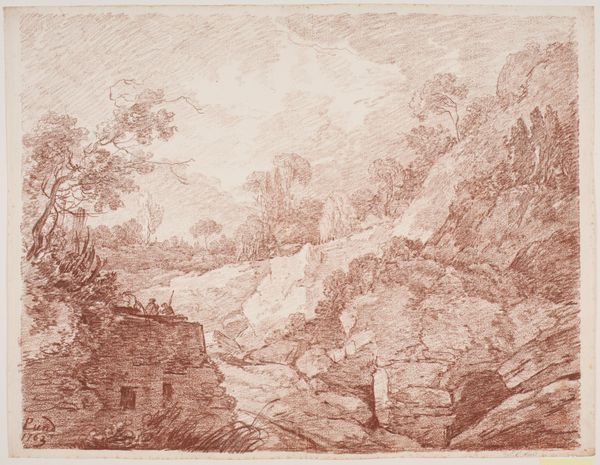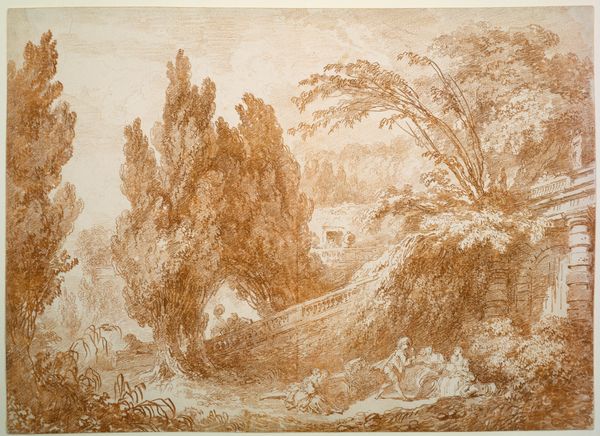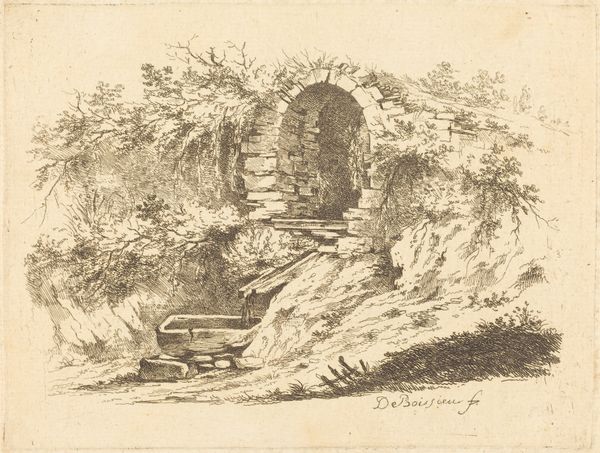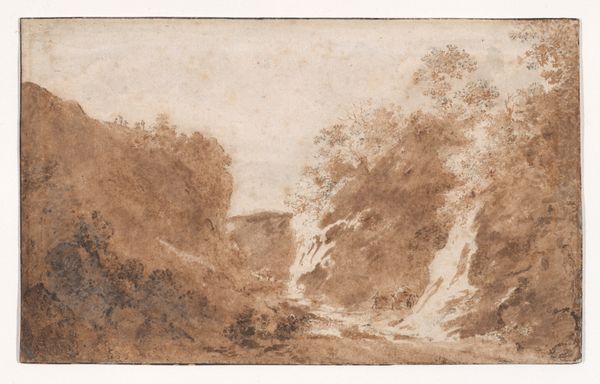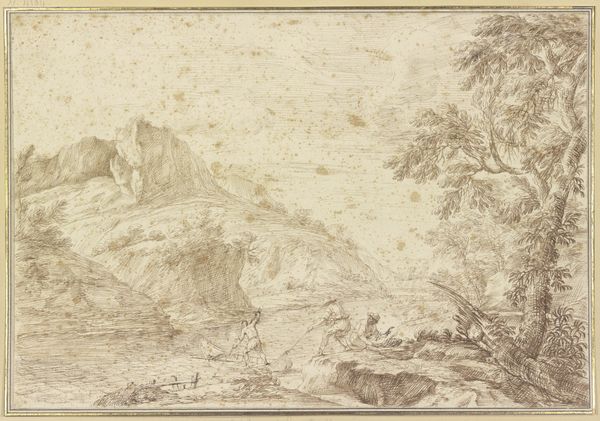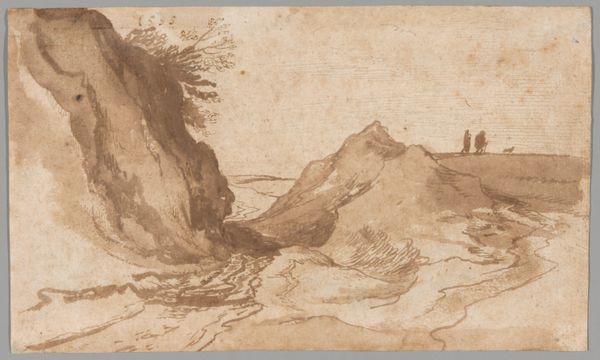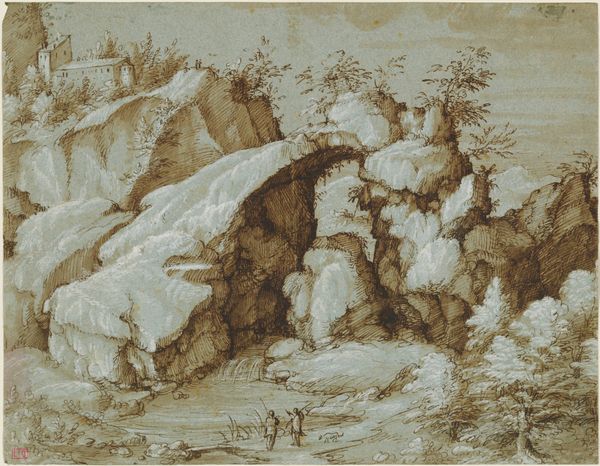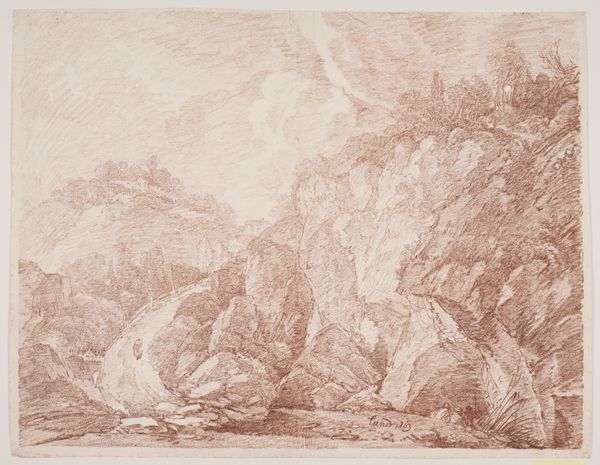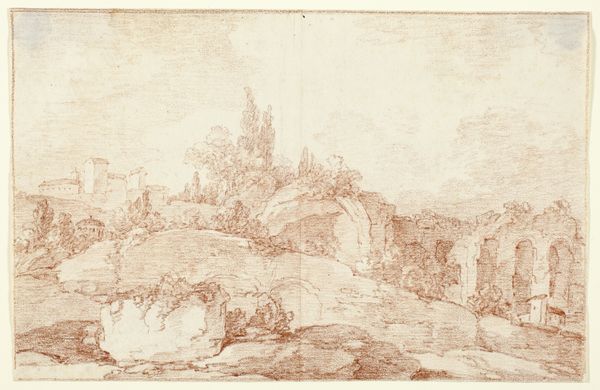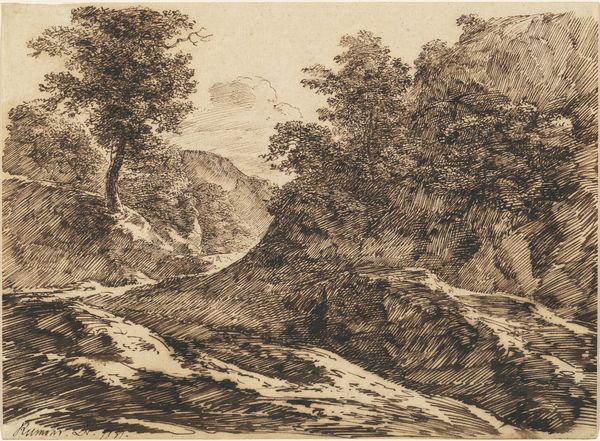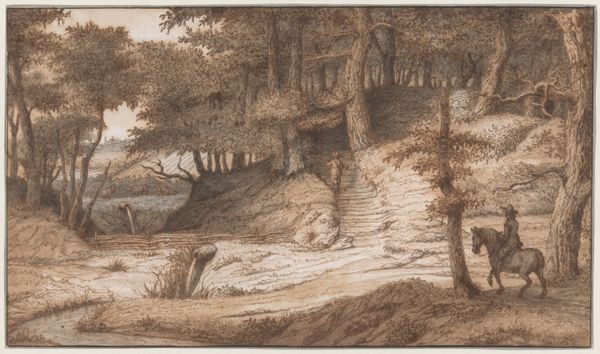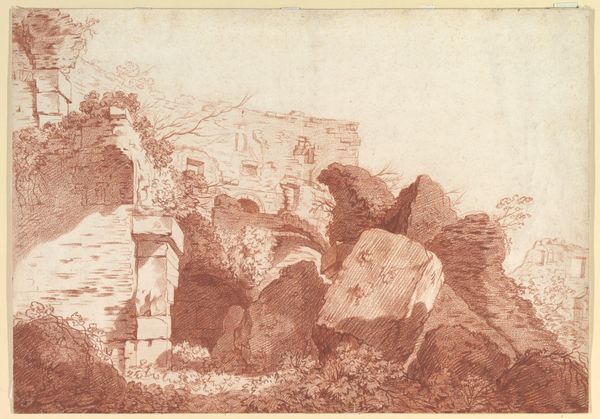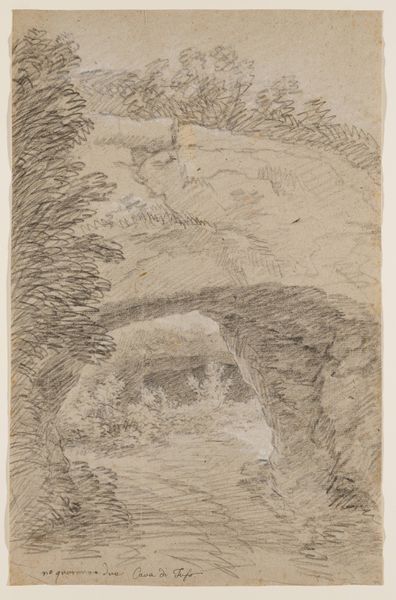
drawing, print, etching
#
drawing
#
neoclassicism
# print
#
etching
#
pencil sketch
#
landscape
#
charcoal drawing
#
pencil drawing
#
15_18th-century
Dimensions: sheet: 11.5 x 15 cm (4 1/2 x 5 7/8 in.) mount: 17 x 19.7 cm (6 11/16 x 7 3/4 in.)
Copyright: National Gallery of Art: CC0 1.0
Curator: Looking at this, I’m immediately drawn to its serenity. The sepia tones, the quiet stillness of the arch… it feels like a memory. Editor: Indeed. What we are viewing is a 1759 etching by Jean Jacques de Boissieu, titled "The Spring at l'Orsière." It's an idyllic scene, characteristic of the period, yet I see more than just pastoral nostalgia. Curator: Oh? Do tell! For me, it’s about that archway. Is it a ruin? A promise of something beyond? It's a threshold, but to what? A forgotten place? Or something yet to come? Editor: Precisely! Consider the Enlightenment context. The era was obsessed with both classical ideals and natural philosophy. Boissieu's work reflects that tension: a man-made structure—the arch, hinting at Roman grandeur—colliding, or rather, co-existing, with raw nature. A spring, representing life and purity. Who has access? Who is excluded from this idealized spring? Curator: That’s an interesting question – access. I get so caught up in the artistry I often overlook those embedded power dynamics. It also reminds me of places from my childhood... That contrast—refined arch, wild overgrowth—creates a delicious tension. Is nature reclaiming what was once ordered? Editor: Or, has nature always been in control? These picturesque scenes served a purpose; they often glossed over the realities of rural life, the labor, the inequalities. To view them critically today demands that we ask, who benefited from this presentation of "untouched" nature? I feel also a contrast to, say, Hubert Robert's, contemporary works... Robert goes much further on ruin-ism. Here is Boissieu seemingly less worried to make statements about grand follies. Curator: It’s food for thought. Though I must admit, even with the awareness of those socio-political undercurrents, the craftsmanship itself holds me. The etching lines are so delicate, giving it an ethereal quality. Editor: A necessary skill to master during that timeframe! The subtlety underscores the sophistication inherent in portraying these 'natural' spaces. They’re far from accidental; constructed. And yes, Boissieu captures a moment, not just of landscape, but of ideology. Thank you for these gentle artistic nudges. Curator: And thank you, for anchoring my flight of fancy. A print holds more in its lines, always, than first meets the eye.
Comments
No comments
Be the first to comment and join the conversation on the ultimate creative platform.

